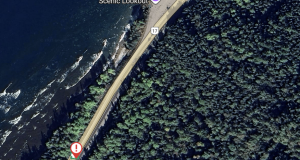I am writing in advance of the Thunder Bay City Council’s debate on the ‘proximity principle’ that will be held on Monday, October 30. I wanted to share some information on this subject, as well as some quick facts about the Nuclear Waste Management Organization (NWMO).
Who is the NWMO?
Founded in 2002, the Nuclear Waste Management Organization is a not-for-profit organization tasked with the safe, long-term management of Canada’s intermediate- and high-level radioactive waste, in a manner that protects people and the environment for generations to come.
The NWMO has been guided for more than 20 years by a dedicated team of world-class scientists, engineers and Indigenous Knowledge Holders that are developing innovative and collaborative solutions for nuclear waste management.
Canada’s plan to construct a deep geological repository is consistent with international best practices. There is consensus among major nuclear regulatory and monitoring organizations that deep geological repositories are the responsible way forward.
Why does the NWMO not follow the ‘proximity principle’?
- Arbitrarily siting a waste facility near an existing nuclear facility would mean nearby municipalities and First Nations would have no say – that’s just not right.
- The proximity principle conflicts with the values and priorities that Canadians identified as important in siting a used nuclear fuel repository – that site selection should only proceed in an area with informed and willing hosts. This project should not be forced on any community just because they are located near a nuclear generating facility.
- It also doesn’t align with United Nations Declaration on the Rights of Indigenous People (UNDRIP) that states that organizations must “consult and cooperate in good faith with the Indigenous peoples concerned through their own representative institutions in order to obtain their free, prior and informed consent before adopting and implementing legislative or administrative measures that may affect them.”
- First Nations did not give their consent for nuclear generating stations to be built on their lands decades ago, and this is an issue those companies are dealing with today. Forcing these communities to also take a deep geological repository continues those historic wrongs.
Certain organizations have said that this ‘proximity principle’ is followed in Europe, but what do those policies really say?
- The proximity principle is a concept in the European Community’s Strategy for Waste Management (1991) which was focused on conventional municipal waste and recycling, and defines proximity principle to mean that waste must be disposed of “in one of the nearest appropriate installations.”
- Scotland mentions proximity principle in their Higher Activity Radioactive Waste Policy in 2011 that states that waste producers need todetermine, to the satisfaction of the regulators, the implications of transportation of radioactive waste, and this will require consideration of the environment, health, safety, security and transport requirements for storage options.
Even though these policies are European and have no jurisdiction in Canada, the NWMO’s plan would still meet both of those requirements.
There are those who do not want to see this project sited in the Northwest, but why would our area say yes to a deep geological repository for Canada’s used fuel?
- Environmental protection. This project would remove all used fuel from the temporary, above ground storage facilities and place them in permanent storage 500-700 metres below ground. The current containers are safe, but only licensed for 50-100 years of use, but used nuclear fuel is hazardous for thousands of years. This project would help ensure that used fuel does not harm the environment in the future, even if Canadians are no longer around to monitor it.
- Economic growth. This project will run for approximately 200 years (perhaps even longer) and would bring billions of dollars in investment to the region (current lifespan estimate is $26 billion over 200 years). Depending on the project phase, it would bring 400-600 new jobs to the region. This is not a boom and bust cycle that we have seen in mining – these are very long term, multi-generational jobs.
- Population growth. The NWMO’s community studies have shown that the population of Ignace would double with this project – to more than 2000 people. The NWMO is committed to relocating its staff to the siting area, so this influx of a highly skilled and highly educated workforce would have huge benefits.
Is this project safe?
This is the most important question of all. Before this project obtains a license from regulators, the NWMO would need to prove that the project can be carried out safely and without negatively impacting people or the environment.
Used fuel and other nuclear materials have been safely shipped around the world for more than 50 years. Transportation of used fuel would not begin for at least 20 years, but the NWMO has already done a great deal of transportation planning. Used fuel containers have undergone severe testing to prove that they can withstand the worst possible road accident. In the UK a train was driven into a used fuel package without damaging it, and in Germany a propane tanker was exploded next to a package, and it wasn’t damaged either.
Both Ignace and Wabigoon Lake Ojibway Nation have been studying this project for more than a decade, and they are currently in the willingness process to determine whether they are interested in hosting a facility. They are scheduled to give their decision in early 2024, with NWMO deciding on a site in late 2024. The two remaining sites are Ignace-Wabigoon Lake Ojibway Nation in Northwestern Ontario, and South Bruce-Saugeen Ojibway Nation in Southwestern Ontario.
- Mixed Curling Standings – December 4 - December 8, 2025
- Vatican artifacts gifted by Pope Francis return to Canada - December 8, 2025
- FONOM Concludes 2025 Board Meeting in Hearst - December 8, 2025
 Wawa-news.com You can't hear the 'big picture'!
Wawa-news.com You can't hear the 'big picture'!



This article is
not true in its entirety. This experiment has never been done anywhere in the world before. There are scientific studies and research that say this very dangerous. IGNACE area is an Earthquake Zone for one. The proposed DRG is right near our water sheds. They have no real life data to guarantee that something will not happen. It’s not a matter of if it’s a matter of when. As far as the “WILLINGNESS” One can’t have WILLINGNESS if they are constantly burying the dangers. One has to have information on both to make an informed decision. Also Ignace and Wabigoon do not have the only say in this matter as it affects everyone on the transportation routes and water sheds. There is so much bullying, belittling harassing and condescending comments by individuals on social media if you post links that are against their agenda. This includes individuals like scientists and journalists. What is NWMO hiding? The amount of people who don’t want this in our area is tremendous. Our tourists say they will not come back if it comes here. The jobs that they speak about will not materialize. It will be their crews and not for local people. In my opinion, NWMO comes to villages and towns and throws all kinds of money around to buy in to the town including Fire trucks etc. They have done this before. There is so much more I can add. We the people do not want HIGH LEVEL RADIOACTIVE NUCLEAR WASTE buried on our Treaty 3 lands